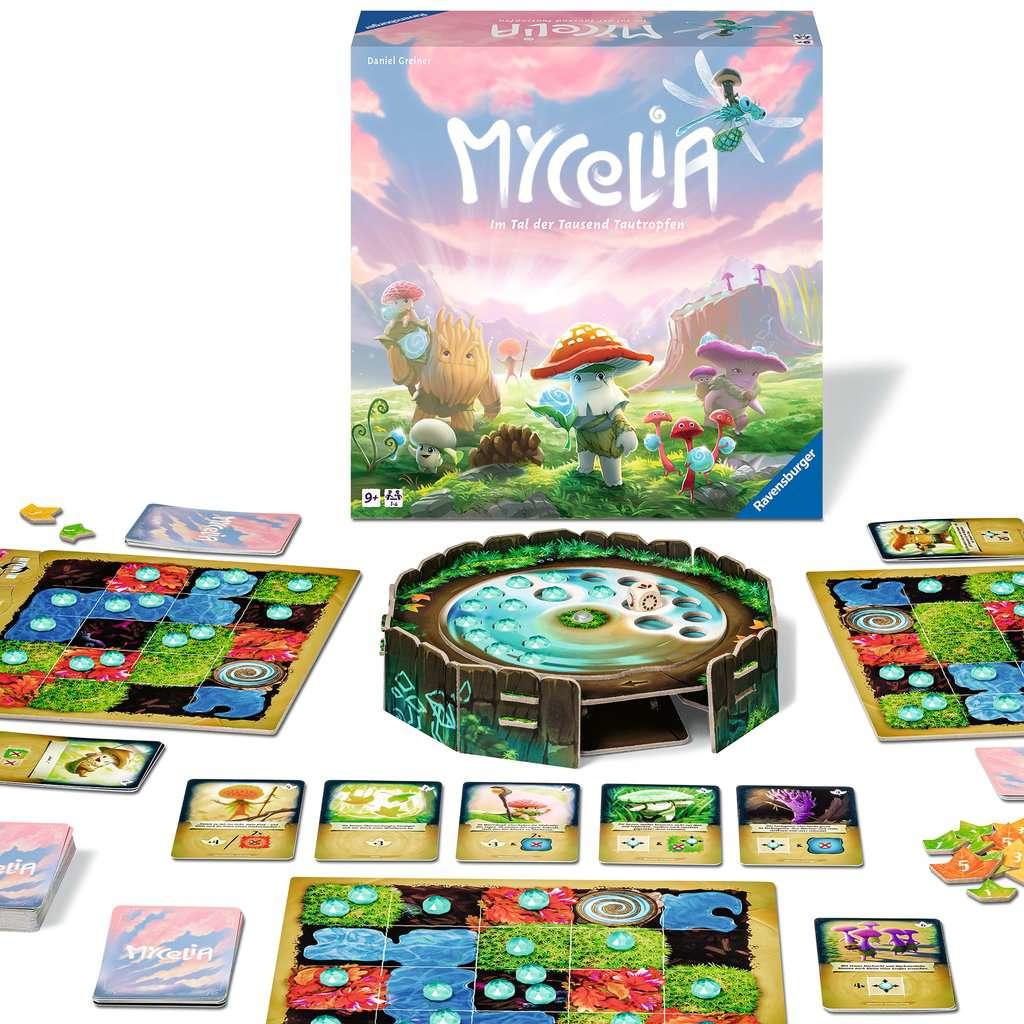Mycelia Review: Cute Intro to Deckbuilding Games
Mycelia is a fun deckbuilding game about using mushrooms to clear dewdrops.
Mycelia is a cute introductory-level deckbuilding game built around magical mushrooms and clearing your board of dewdrops. Deckbuilding games are a growing genre within tabletop games, with players all starting off with the same basic deck and building it over the course of the game, usually through some currency that is generated by the deck itself. One major issue with deckbuilding games is that they require both improvisational thinking and a solid understanding of the overarching strategies of the genre in order to be truly successful. Mycelia attempts to sand down some of the rough edges of the deckbuilding genre with a fun game that can either serve as an introduction to the deckbuilding genre to newcomers or as a "gentle" competitive game with enough strategy to keep deckbuilding veterans engaged.
Designed by Daniel Greiner and published by Ravensburger, Mycelia centers around hiring and deploying magical anthropomorphic mushrooms to help clear a personal board of dewdrops, which are represented by plastic beads. As with other deckbuilding games, players all start with the same starter deck and dewdrop placements on their board. Each turn, players draw three cards from their personal deck and play them, with each card generally granting players one of three things – the ability to move dewdrops from one space to another, the ability to remove dewdrops from the board, or granting players "leaves," which serves as the currency of the game. Players spend leaves to hire mushrooms, which are placed directly on top of the deck, or to take one or more "basic actions" per turn. In addition to directly removing dewdrops, they can also clear them by moving them onto the shrine space on their personal board.
Many of the cards in Mycelia only impact dewdrops that meet certain conditions. Some cards allow players to remove dewdrops that sit on certain kinds of spaces (every board has water, moss, leaves, and mud spaces), while others only impact dewdrops that either sit by themselves or sit with other dewdrops on spaces. A key to Mycelia is understanding what activation conditions are in your deck and then utilizing them to maximum effect.
Generally speaking, the dewdrops add a fun variation to deckbuilding that differs from the usual win condition of trying to collect victory points and adds a different kind of spatial strategy. Do players move dewdrops towards the shrine space, or do they try to position them to maximize the removal or movement effects offered by other cards?

When dewdrops are removed from a player's board, they are placed onto the Shrine of Life, a 3D board with spaces for dewdrops. When the Shrine of Life is full, players rotate the top layer to empty it, causing both the dewdrops and a placement dice to fall. Depending on what symbol the dice shows, players place dewdrops back onto their board based on a supply card randomly chosen at the beginning of the game. The winner is the player who clears their board first, although every player is guaranteed to have an equal number of turns so there's a distinct possibility of a game having multiple winners.
Mycelia has a modularity component, with two different levels of play plus a solo mode. The "basic" game is designed as an introduction to both the game and the deckbuilding genre in general, with simpler cards and basic actions available to use. The expanded version of the game introduces the ability to remove cards from a player's deck (a standby in deckbuilding games), and also cards that trigger more powerful one-time effects. One thing missing from Mycelia is the ability to draw or play additional cards in a turn – while players can still trigger some strong combos (especially in the expanded mode), I felt the inability to draw additional cards was a bit limiting and prevented some of the end-game madness that makes deckbuilding games so fun.
My only other real complaint about Mycelia is that the game is component heavy. The base game alone requires the 3D Shrine of Life, game boards for each player, dewdrops, the placement die, the supply card, the starting placement card, leaves, and the cards themselves. Several of these pieces only get used once in a game and I felt that the components both make the game seem more complex than it actually is and is a bit wasteful.
The strength of Mycelia is that it's easy to learn but still requires enough strategy to satisfy deckbuilding veterans. I liked that my 9-year old could master Mycelia in just a few rounds, but I could still try to ramp up some powerful combos that could really clear my board in the term. If you're looking for a different variation on deckbuilders, want to introduce new players to the genre, or are just looking to have a good time, you'll enjoy Mycelia.
A review copy of Mycelia was provided by the publisher for review.
0comments